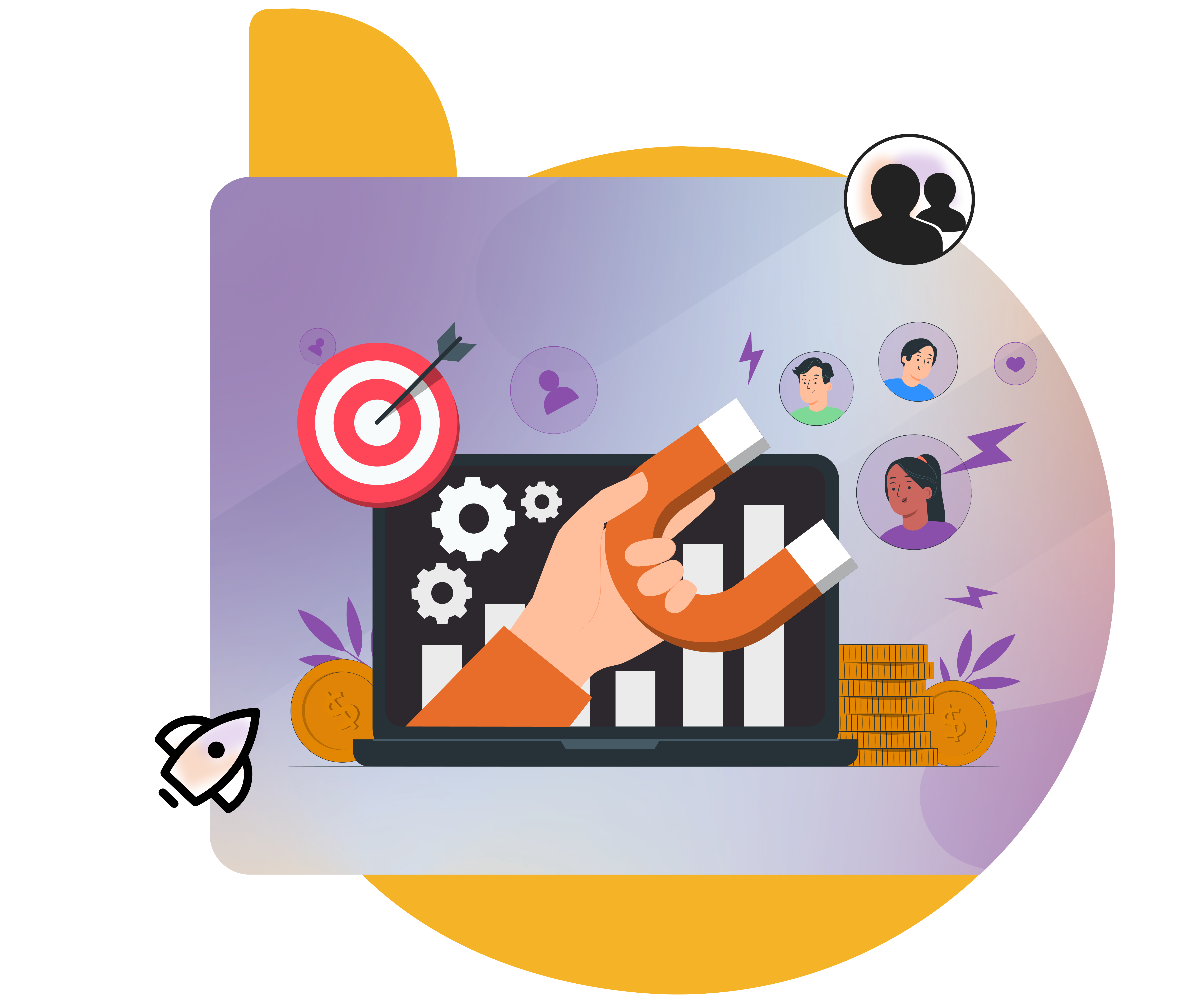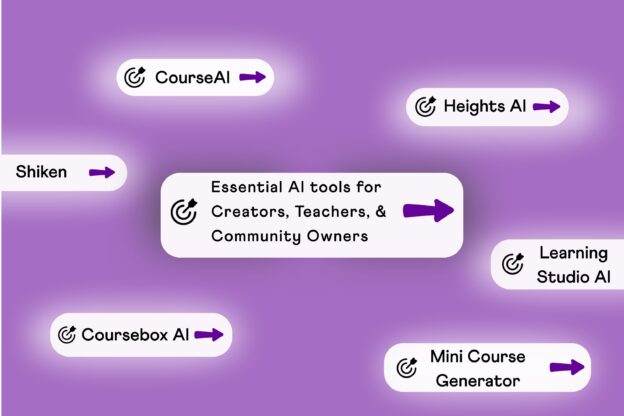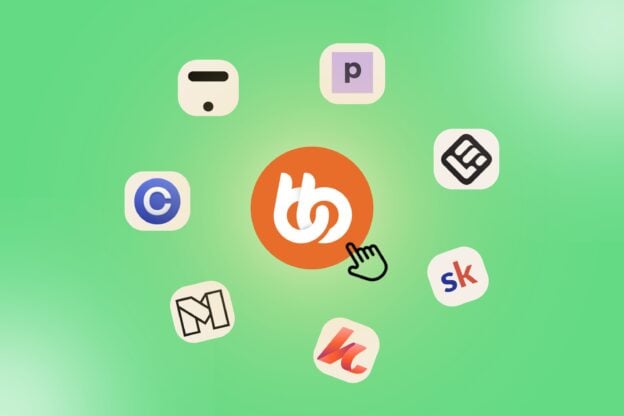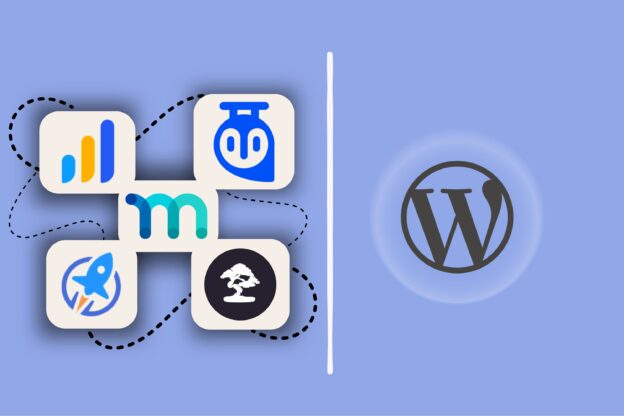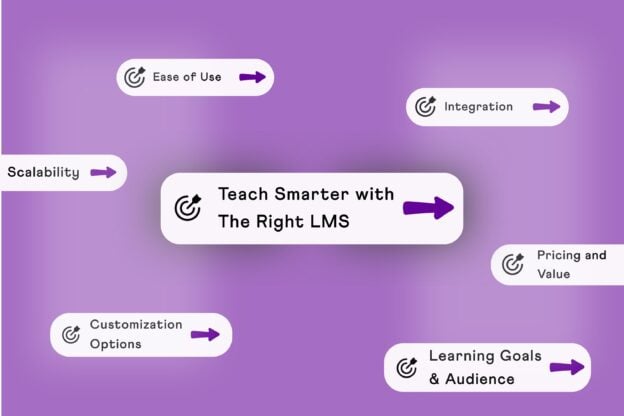In a world where attention spans are shorter than your favorite TikTok clip, traditional teaching methods can feel as outdated as dial-up internet.
And then enters gamification for learning. A revolutionary approach that changes the mundane into the extraordinary. So, if you are an educator, corporate trainer or just someone who believes learning should be fun (and maybe a little competitive), this guide is for you.
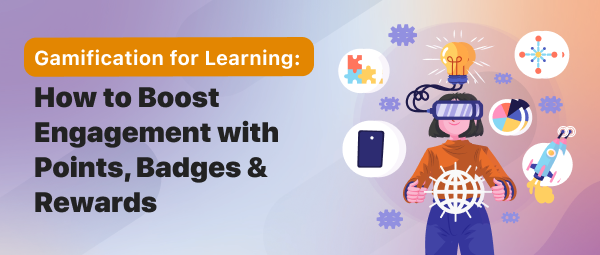
In this guide, we’re diving into how you can boost engagement and learning outcomes by integrating game mechanics like points, badges, rewards and even a few extra tricks like leaderboarders and performance graphics.
What Is Gamification For Learning?
At its core, Gamification for learning is the art of applying game-design elements in non-game contexts—in this case, education. Imagine if every time you aced a quiz, you earned points, unlocked a shiny badge, or moved up a leaderboard. Sounds fun, right?
That’s the essence of gamification: it converts everyday learning tasks into engaging challenges that reward progress.
So, when you ask, “what is gamification in education?” The answer is simple: it’s a way to inject fun, feedback, and even a bit of friendly competition into learning environments.
To make it more simple, you can think of it as a dash of video magic to your classroom or training session. However, It’s not about making everything a competition but Instead, it’s about creating an interactive system that motivates learners through various gamification types, such as:
- Points: The digital currency that provides immediate feedback and tracks progress for every small win.
- Badges: Visual tokens of achievement that recognize milestones and offer a sense of pride.
- Leaderboards: Friendly rankings that foster competition while encouraging social interaction.
- Rewards: Tangible or intangible incentives, like certificates or exclusive content, that reinforce positive behavior.
- Levels and Progress Bars: Clear indicators of growth that show learners how far they’ve come and what challenges lie ahead.
Why Do You Need Gamification in Education and Learning?
Before we get lost in the excitement of points and badges, let’s address the “why” behind gamification in learning. Traditional education often struggles with low engagement, minimal participation, and a one-size-fits-all approach that leaves many learners behind. Here’s how gamification fixes that:
Increased Engagement and Motivation
Remember the last time you played a game and couldn’t put it down? That’s because games are designed to hook you with instant feedback and clear rewards. Similarly, a gamified learning environment keeps students on their toes, eager to earn points, collect badges, and compete for top spots on leaderboards. Research has shown that gamification of learning is becoming a must have in modern education.
Improved Knowledge Retention
When learners receive immediate feedback—say, through points awarded for correct answers—they’re more likely to remember what they learned. It’s the difference between passively reading a textbook and actively “playing” with the content. In other words, when you ask what is gamification in business? You can see its impact not just in classrooms but also in corporate training programs.
Enhanced Collaboration and Social Interaction
incorporating elements like team challenges and leaderboards encourages social interaction, healthy competition, and even collaboration. Suddenly, learning becomes a shared journey, where students cheer each other on rather than merely compete in silence.
Personalized Learning Journeys
Every learner is unique, and a one-size-fits-all approach rarely works. Gamification allows educators to customize challenges and rewards based on individual progress. Whether it’s awarding extra points for creativity or unlocking advanced badges for mastery, learners receive a personalized path that keeps them motivated to improve.
The Dopamine Effect: How Gamification Hacks Your Brain
Ever wonder why you keep checking your points, badges, or leaderboard notifications—even when you should be working? It’s all in your head (literally)! Studies have shown that our brains release dopamine, the “feel-good” chemical, when we get rewards.

For example, 80% of learners are more effective with gamified practices. Moreover, with a whopping 97% of kids playing computer games, teachers will continue to gamify their classroom practices.
On the retail side, organisations are benefitting from gamified training practices. Gamification has been shown to improve employee engagement by over 60%.
Source- growthengineering.co.uk
Essentially, gamification tricks your brain into celebrating every little win, turning even mundane tasks into mini victories. It’s like your brain is on a constant sugar rush, cheering every time you score a badge or climb the leaderboard. So yes, while it might feel a bit like a “dopamine hack,” it’s actually a science-backed way to make learning more engaging and fun.
Top Gamification Elements
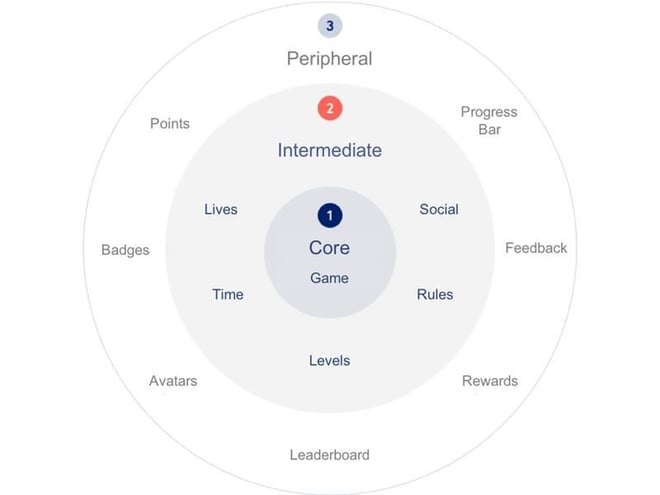
At the heart of gamification are three classic elements: points, badges, and rewards. Let’s break these down.
Points – The Digital Currency of Learning
Points are the backbone of any gamified system. They provide immediate, quantifiable feedback for every small victory or effort. You could be earning points for participating in class discussions, acing a quiz, or submitting assignments on time, points serve as a measurable way to track progress. They’re like the “experience points” in your favorite RPG, guiding you from a newbie to a seasoned expert. The instant feedback is why gamification for learning resonates so well, it’s all about showing that you’re actually moving forward.
Badges: Visual Tokens of Achievement
Badges are those icons that you proudly display on your digital profile, proving that you’ve mastered a particular skill or completed a challenge. Those badges symbolize achievement, recognition, and sometimes even bragging rights.
Design badges that are visually appealing and meaningful. For example, a “Quiz Whiz” badge for scoring 90%+ on tests or a “Discussion Dynamo” badge for active participation can inspire learners to aim higher.
Rewards: The Cherry on Top
While points and badges are fun, rewards are the ultimate incentive. Rewards can be tangible (extra credit, certificates, discounts on future courses) or intangible (exclusive access to advanced content, public recognition, or even a simple congratulatory message). They help reinforce positive behaviors and encourage learners to continue engaging with the material.
Engagement with Additional Gamification Elements
While points, badges, and rewards form the core, there are several supplementary game elements that can take your learning environment to the next level.

Leaderboards: Friendly Rivalry
Leaderboards rank learners based on their accumulated points or achievements. They can be a double-edged sword, however: while they motivate some students, they might discourage others if the gap between top performers and the rest is too wide. The trick is to create segmented leaderboards (by class, level, or even subject) to ensure everyone has a fair shot at the top.
Performance Graphs: Visual Progress Reports
Imagine having a graph that shows how your performance has improved over time. Performance graphs are like a Fitbit for your brain—they give learners a visual representation of their progress, making it easier to set goals and see improvements.
Meaningful Stories and Narratives
Humans are wired for stories. Integrating narrative elements into your learning environment can provide context and meaning to otherwise mundane tasks. Whether it’s framing a lesson as a heroic quest or weaving case studies into the curriculum, stories help learners connect emotionally with the content.
Avatars: Personalize Your Learning Experience
Avatars allow learners to create a digital representation of themselves. This not only adds a fun, personalized touch but also helps foster a sense of identity and belonging within the learning community. When learners can see a version of themselves evolving along with their achievements, it adds an extra layer of motivation.
Teammates: The Power of Collaboration
Encourage team-based challenges where learners can form groups, compete together, or collaborate to overcome obstacles. This fosters a sense of community and makes learning a shared adventure rather than a solitary journey.
Best Examples of Gamification in Learning
Now that you know the theory, let’s dive into some examples of gamification from popular learning platforms that show how gamification has revolutionized learning environments. Here are five standout platforms and why their gamified approaches work so well:
Duolingo
About:
- Founded: 2011
- Country: United States
- Users: Over 500 million registered users worldwide
- Link: Duolingo Website

Description:
Duolingo is one of the most well-known gamified language-learning apps. By using points (experience points or XP), daily streaks, badges, and leaderboards, it transforms everyday language practice into a fun, interactive game. This design motivates learners to return day after day because every lesson feels like a mini-challenge.
Why It Works:
- Instant Feedback: Learners receive immediate XP for every lesson, reinforcing progress right away.
- Habit Formation: Daily streaks motivate users to practice consistently, building a routine.
- Social Recognition: Badges and leaderboards tap into the natural desire for recognition and friendly competition, keeping motivation high.
Kahoot!
About:
- Founded: 2013
- Country: Norway
- Users: Used by millions of students across 200+ countries, with cumulative participation in the billions
- Link: Kahoot! Website

Description:
Kahoot! turns classroom quizzes into lively competitions. Teachers use it to create engaging quizzes, surveys, and discussions that energize learners and foster a collaborative atmosphere.
Why It Works:
- Real-Time Competition: The live, competitive environment boosts adrenaline and engagement.
- Interactive Learning: The game-like format makes learning more memorable and fun.
- Collaborative Spirit: Group participation fosters social interaction and turns learning into a shared experience.
Classcraft
About:
- Founded: 2013
- Country: Canada
- Users: Utilized by thousands of schools around the globe, impacting over 1 million students
- Link: Classcraft Website

Description:
Classcraft transforms the classroom into an immersive role-playing game where students form teams, earn points for positive behavior, and overcome challenges through engaging narratives.
Why It Works:
- Team Dynamics: Encourages collaboration and peer support while fostering a competitive, yet friendly, environment.
- Behavioral Incentives: Rewards academic achievements and positive social behaviors, making the classroom feel more like an adventure.
- Engaging Storytelling: The narrative element transforms everyday lessons into quests, capturing student imagination and focus.
Quizlet
About:
- Founded: 2005
- Country: United States
- Users: Over 50 million active users
- Link: Quizlet Website

Description
Quizlet gamifies the study process with interactive flashcards and games like Quizlet Live. By turning repetitive study into a dynamic challenge, it makes memorization more engaging and less monotonous.
Why It Works:
- Interactive Tools: Flashcards and games keep learners actively engaged and break the monotony of traditional study methods.
- Immediate Response: Instant feedback helps students quickly identify mistakes and retain information better.
- Friendly Competition: Real-time challenges and team games create a fun, competitive atmosphere that boosts motivation.
Codecademy
About:
- Founded: 2011
- Country: United States
- Users: Over 45 million learners worldwide
- Link: Codecademy Website

Description:
Codecademy integrates gamification into its coding courses with interactive lessons, points, badges, and progress tracking. This approach provides immediate rewards and clear visual indicators of progress, making the learning of complex coding skills more accessible and fun.
Why It Works:
- Visual Progress Indicators: Clear progress tracking and achievement badges provide tangible evidence of improvement, essential for tackling challenging subjects.
- Hands-On Learning: Interactive lessons offer immediate rewards, making coding more accessible and engaging.
- Motivational Milestones: A well-structured path of achievements keeps learners motivated to continue practicing and mastering new skills.
List Of Top 10 Online Course Platforms With Gamification
Here’s a curated list of online course platforms that incorporate gamification features to boost learner engagement and effectiveness. These platforms either have gamification built right in or offer integrations that turn mundane lessons into interactive, rewarding experiences:
1. BuddyBoss
BuddyBoss is a community-centric learning platform that seamlessly integrates gamification. It enables educators to award badges, track points, and display leaderboards, thereby enhancing social interaction and boosting student motivation. It’s ideal for those who want a fully immersive online learning community.
2. Kahoot!
Originally designed as a quiz platform, Kahoot! turns classroom assessments into lively, game-based competitions. With its real-time quizzes and interactive challenges, it injects energy and friendly rivalry into the learning process, making it a hit in both classrooms and corporate training.
3. TalentLMS
TalentLMS is a versatile learning management system that comes with built-in gamification features such as points, badges, and levels. It allows course creators to design engaging training experiences that not only deliver content but also motivate learners through measurable progress and rewards—especially popular in corporate training environments.
4. Mambo Gamification Software
Mambo is a specialized tool that adds gamification layers to existing learning management systems. With customizable modules for points, challenges, and rewards, it helps educators transform traditional courses into engaging, game-like experiences that enhance participation and retention.
5. Centrical
Centrical merges gamification with performance management. Its platform provides interactive challenges, reward systems, and detailed analytics, making it a powerful tool for organizations looking to boost both learner engagement and overall performance in training programs.
6. Xperiencify
Xperiencify is designed to turn ordinary online courses into immersive, interactive experiences. It offers gamification elements such as progress bars, badges, and interactive quizzes, which not only motivate learners but also drive higher course completion rates.
7. Docebo
Docebo is an AI-powered learning platform that integrates gamification to deliver personalized, engaging learning experiences. Its features—like leaderboards, points, and badges—work together to boost motivation and performance across diverse learning environments.
8. Duolingo
A household name in language learning, Duolingo exemplifies gamification in action. With over 500 million registered users, it uses experience points (XP), daily streaks, and interactive challenges to make language practice fun and addictive. Its success proves that when learning feels like a game, motivation soars.
9. Easy LMS
Easy LMS is a straightforward platform that makes it easy for educators to add gamification to their courses. It allows for points, badges, and certificates to be integrated into lessons, providing immediate feedback and encouragement that keeps learners moving forward.
10. iSpring Learn LMS
iSpring Learn LMS offers a user-friendly approach to gamified learning. With features such as interactive quizzes, progress tracking, and reward systems, it helps increase learner participation and retention by turning educational content into an engaging, game-like experience.
View Plans
Try BuddyBoss to create courses that keep learners coming back.
Implementing a Gamification Strategy in Learning Environments
So, you’re sold on the idea of gamification, but how do you actually implement it in your eLearning platform—especially if you’re using WordPress and BuddyBoss? Let’s break it down into clear steps with some bullet points to keep things easy to follow.
Step 1: Define Your Learning Objectives
Before you start awarding points or designing badges, you need to get crystal clear on what you want your learners to achieve. Ask yourself:
What are your goals?
- Increase engagement?
- Enhance retention?
- Foster collaboration?
How will you measure success?
Improved test scores, higher course completion rates, or increased participation?
Step 2: Map Out the Learning Journey
Plan the entire learning process from start to finish, identifying key milestones where gamification elements can be seamlessly integrated. For example:
- Milestones and Rewards: Completing the first module earns a “Getting Started” badge. Finishing the course unlocks a “Mastery” badge.
- Visualize the Path: Use a flowchart or mind map to outline the learning journey.
Mapping out the journey transforms a linear curriculum into an interactive adventure, making every checkpoint a mini celebration.
Step 3: Choose Your Gamification Tools
There’s a plethora of gamification tools that work great with WordPress, especially if you’re using BuddyBoss as your foundation. Consider:
- Popular Platforms: GamiPress, BadgeOS, myCRED
- Key Considerations: Does the tool fit your needs and budget?, Can it integrate smoothly with your LMS (like BuddyBoss)?
These tools are like cheat codes for your eLearning platform—they let you add points, badges, and leaderboards without needing to reinvent the wheel.
Step 4: Implement the Core Elements
Now, start small by integrating the essential gamification elements. Focus on creating immediate feedback and tangible progress markers:
Points:
Award points for completing tasks, participating in discussions, or even for attendance.
Points act as the digital currency of learning, offering instant recognition of effort.
Badges:
Design visually appealing badges that reflect different achievement levels.
Think “Quiz Whiz” for high test scores or “Discussion Dynamo” for active participation.
Rewards:
- Establish a rewards system that might include certificates, extra credit, or exclusive content access.
- Rewards serve as the cherry on top that reinforces every achievement.
Step 5: Incorporate Additional Engagement Elements
Once your core elements are in place, enhance your strategy with extra features to keep learners motivated:
- Leaderboards: Create friendly competition by displaying top performers, Consider segmented leaderboards to ensure everyone has a fair shot.
- Performance Graphs: Provide visual progress reports so learners can see how they’re improving over time.
- Narratives and Avatars: Add storytelling elements and let learners create custom avatars to personalize their journey.
- Team Challenges: Organize group projects or challenges that encourage collaboration and collective problem-solving.
These extras not only make the experience more dynamic but also cater to different learning styles.
Step 6: Pilot and Iterate
Before rolling out your gamification strategy to your entire learner base, run a pilot program to test the waters:
- Pilot Testing: Implement the system with a smaller group to observe interactions and gather feedback.
- Gather Feedback: Ask both the hardcore gamers and those who’d rather hit the snooze button for honest input.
- Analyze & Tweak: Use data on engagement, point accumulation, and badge distribution to refine your approach.
Integrating Gamification Tools with Your LMS
No matter how brilliant your gamification strategy is, it won’t work if it isn’t integrated seamlessly into your learning management system (LMS). Here’s how to get started using popular WordPress-based solutions, our trusted partners in the WP industry:
Step 1: Choose the Right LMS
Select an LMS built on WordPress that supports integration with gamification tools. Instead of traditional platforms like Moodle or Blackboard. LearnDash and LifterLMS are highly popular WordPress LMS options, and BuddyBoss is a popular community platform that enhances these LMS solutions. These systems are specifically designed for the WordPress ecosystem, offering flexibility, ease of customization, and native integration with gamification plugins. By choosing a WordPress LMS, you align with industry-leading solutions that our partners trust and recommend.
Step 2: Evaluate Gamification Plugins
There are several top-notch gamification plugins available in the WordPress ecosystem that cater specifically to education:
- GamiPress: A user-friendly tool that allows you to add points, badges, and leaderboards directly into your WordPress LMS.
- BadgeOS: Perfect for creating custom achievement systems tailored to various learning milestones.
- myCRED: Offers a comprehensive points management system, ideal for tracking progress and awarding rewards. These plugins are popular among WordPress users and integrate seamlessly with platforms like BuddyBoss and LearnDash.
Step 3: Ensure Seamless Integration
Confirm that your chosen gamification tools integrate smoothly with your WordPress LMS. This means having a user-friendly dashboard, minimal technical complications, and a system that works out of the box without requiring extensive coding knowledge. The goal is to provide an engaging experience without disrupting your existing learning process.
Step 4: Training and Onboarding
Once the integration is complete, it’s crucial to offer training sessions for both educators and learners. Explain how the gamification system works, outline the rules, and demonstrate how to track progress. Effective onboarding minimizes confusion—ensuring that your gamification strategy delivers on its promise of making learning both fun and effective, without the dreaded “pointless points” complaints.
By leveraging popular WordPress LMS solutions and trusted gamification plugins, you can create a dynamic, interactive learning environment that stands up to modern educational demands and is fully aligned with industry best practices.
Gamification for Different Learning Styles

Let’s be real: not every learner is the same. Some are visual learners, others are auditory, and some are downright kinesthetic. A one-size-fits-all gamification strategy might leave a few learners scratching their heads, wondering if they accidentally logged into a video game instead of a classroom.
Visual Learners
For those who learn best through images and visual aids:
- Infographics and Badges: Use eye-catching badges and progress charts to represent achievements.
- Performance Graphs: Show progress visually with graphs and charts that make improvements clear.
Auditory Learners
For learners who prefer listening:
- Audio Feedback: Integrate sound effects or verbal cues when points are earned or milestones reached.
- Podcasts or Recorded Narratives: Supplement lessons with audio content that reinforces the gamified elements.
Kinesthetic Learners
For those who learn by doing:
- Interactive Quizzes and Simulations: Use hands-on activities where learners can earn points by completing tasks or simulations.
- Group Projects: Encourage collaborative challenges where learners physically interact (even if it’s virtually) to solve problems and earn rewards.
Personalized Learning Paths
Beyond these learning styles, consider adaptive gamification systems that adjust challenges and rewards based on individual performance. This personalized approach not only meets diverse needs but also ensures that every learner feels like the gamified journey is tailor-made just for them.
Emerging Trends: The Future of Gamification in Education
The world of gamification is evolving faster than you can say “achievement unlocked.” Here are some trends that are shaping the future:
AI-Driven Adaptive Gamification
Imagine a system that not only rewards you but also adapts to your learning pace and style. AI can analyze performance data and adjust challenges and rewards accordingly. This means no more one-size-fits-all—each learner gets a personalized experience.
Virtual Reality (VR) and Augmented Reality (AR)
VR and AR are taking the gaming world by storm, and education is no exception. These technologies can immerse learners in simulated environments where gamification elements are integrated seamlessly into real-life scenarios. Picture a history lesson where you’re not just reading about ancient Rome but walking its streets in VR, earning points as you explore!
Mobile Gamified Learning Apps
With mobile devices in nearly every pocket, gamified learning apps are becoming a powerful tool for on-the-go education. These apps can provide bite-sized challenges, interactive quizzes, and immediate rewards, making learning accessible anytime, anywhere.
Social and Collaborative Gamification
Future gamification strategies will increasingly focus on social learning. Imagine group challenges where teams collaborate, compete, and share their progress on social media. This not only enhances engagement but also builds a sense of community among learners.
Data-Driven Insights and Continuous Improvement
As more data becomes available, gamification systems will rely on analytics to continuously improve. Educators will be able to track KPIs such as engagement rates, points accumulation, and badge distribution, allowing for real-time adjustments to maximize learning outcomes.
Conclusion: Level Up Your Learning Experience
By integrating points, badges, rewards, and additional elements like leaderboards, performance graphs, meaningful stories, avatars, and team challenges, you create an environment where learning becomes a dynamic adventure.
So, why stick with the old ways when you can turn learning into a game? Embrace gamification for learning, experiment with different elements, and continuously refine your strategy based on feedback and performance metrics. After all, in the game of education, the ultimate reward is knowledge—and maybe a few virtual high-fives along the way.

